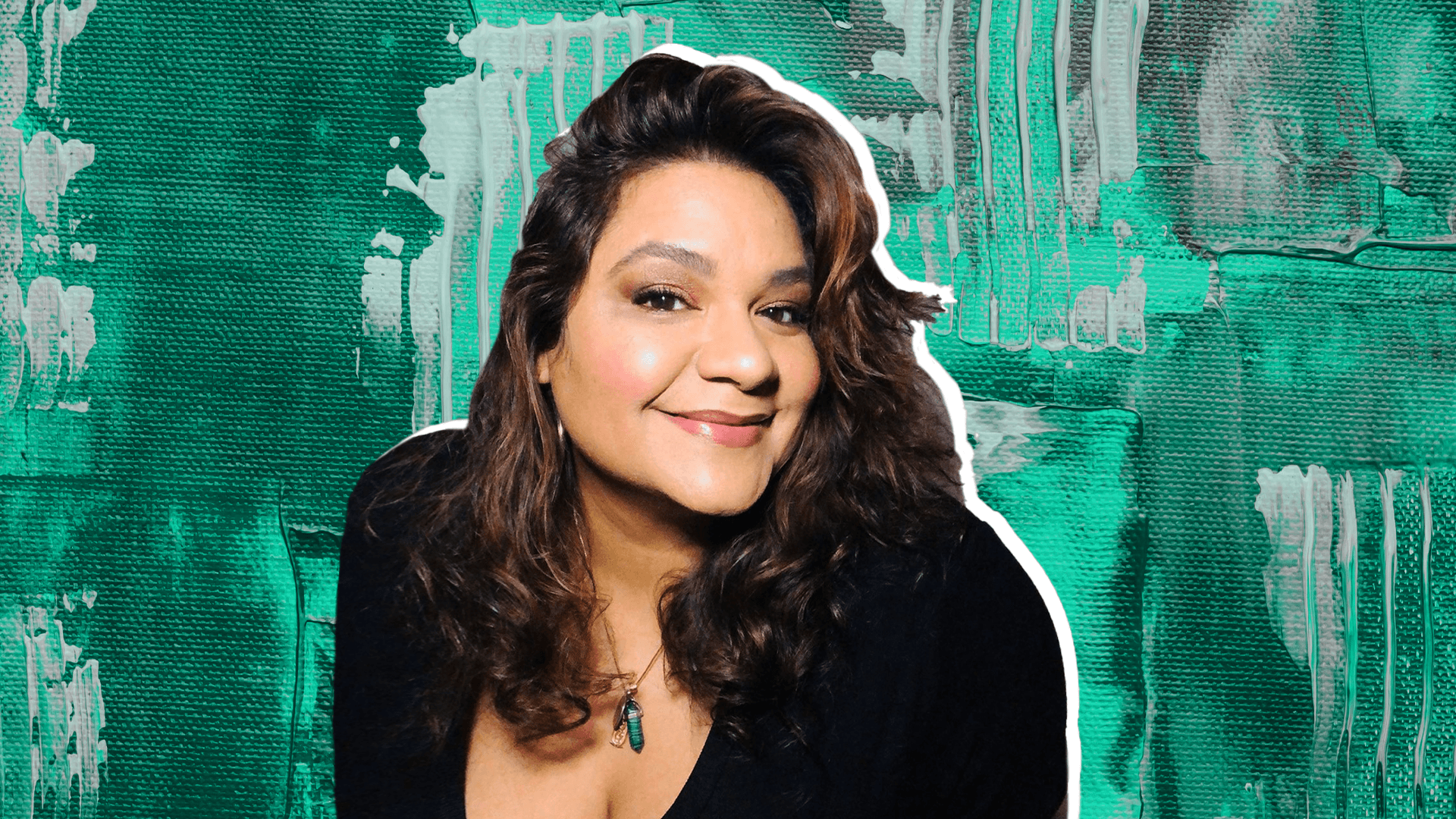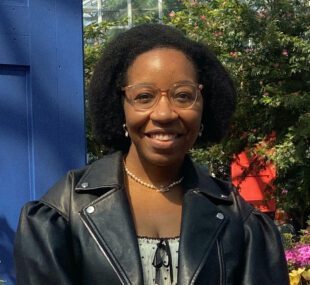For those who say dreams don’t come true, Amy Farid is living proof that with undeniable passion, determination, and hard work, even your wildest dreams can become a reality. Once upon a time, she was just a small-town Osage Indian girl from Wichita, Kansas with a love of fashion and hair who spent her high school days creating DIY photo shoots with her best friend. Now, Farid has become a creative force in both the fashion and beauty industry thanks to her work as a top editorial hairstylist — even snagging lead hairstyling gigs at New York Fashion Week for the likes of Hood by Air and Chromat. And, she’s done it all while continuing to educate our industry on the very real issues affecting Indigenous people, like cultural appropriation.

The Tease spoke to Farid about how she cultivated her dream career, her memorable NYFW moments, what it means to be Indigenous in the hair industry, and her take on Indigenous representation today.
The Tease: Can you tell us about how your interest in hair began, and what inspired you to become an editorial hairstylist?
Amy Farid: My interest in hairstyling began as a teenager in my middle school library. I loved looking through the magazine they had back then—then, meaning the 1990s! Sassy magazine being one of my favorites. From Sassy, I went to Vogue and Harper’s Bazaar. In particular, I loved the Guess Jeans ads of the ‘90s. The women seemed like superheroes almost. I became a fan of the photographer who shot these campaigns back then — Ellen Von UnWerth. Her style was grainy black and white and the models were always super glam and the hair was always incredible and always looked vintage and cinematic.
When I got to high school, I was this secret fashionista. I was a skater girl on the outside but loved all of this high fashion coming out of Paris. I met my best friend after school one day. He was taking pictures of the drama club and he asked the crew of high school kids waiting to get their pic taken if anyone could do a red lip and a braid. I was at this after school activity by accident just waiting on a ride from my friend, but when I heard that I got excited. I met my best friend and we both geeked out about the same things: fashion and photography. We started taking pictures of our friends or other people we would scout in our small Kansas town.
It went like this: we would go through our “models’” closets and pick pieces that we knew we could make work for the photo shoot. Then, I would do their hair and makeup. My friend would shoot them and we would excitedly drop the film off to get processed! We would get the film and look at the contact sheets of our work and “kiki” at how amazing we were and how this picture looked just like the photographer pics we would see in Vogue. So, really that whole process made me so hype. I knew that I love this form of creativity, but coming from where I’m from I didn’t know how to get from here to there. But, that is where the spark happened.
Who were your hair icons growing up and who inspires you now?
Farid: My hair icon when I was growing up and reading all these fashion magazines was Orlando Pita. He did all the coolest shoots, shows, and music videos back then. Presently, I am inspired by this Japanese hairstylist/wig artist named Tomihiro Kono. His work with wigs is just beyond. A true artist. I will always be inspired by Julien D’Ys — the man that I assisted. I assisted him so I feel like I am a descendent of him in some way.
Since breaking into the industry, you’ve worked as a lead hairstylist for several fashion designers such as Chromat, Hood by Air, and Kempner during New York Fashion Week. How did you get your start working backstage at fashion shows?
Farid: I moved to New York City on a Greyhound bus to pursue my dreams of being an editorial hairstylist. I started apprenticing at Bumble and bumble and got discovered by Michael Gordon. He liked how I was styling the receptionist’s hair and asked me to come assist on a new Bb hair campaign he was shooting at his house that weekend. After that, the doors just opened for me. I started assisting people I had known from these magazines I was assisting in New York. Then Bumble and bumble started sending me to Milan and Paris to do the shows there as well. It was a dream come true to be doing the shows in Paris. So, that was how I started. There is a lot that happens after you do it for a few seasons. During that time you are also doing photo shoots and building your portfolio. Then I got an agent … instead of assisting, you start keying your shows.

Farid: Any HoodByAir or Luar show is a standout for me, but specifically these seasons: HBA Fall/Winter 2014; HBA F/W 2015, HBA F/W2016, and LUAR S/S 2018. With Hood by Air, we always wanted to push everything in every direction. Shayne [Oliver] (t co-founder and Creative Director of Hood by Air) loves doing shows so we wanted everything to be showstopping or wanted people to just gag or have to think.
Being a member of the Osage tribe, how has your Native American heritage affected the way you perceive beauty?
Farid: Being Native didn’t really influence how I saw beauty. I, like the entire world, was a person of color who was used to seeing ONE standard of beauty—that being, white, Eurocentric people. So, I came into this business like a lot of people my age, with that ingrained in us. The times are definitely changing and I am seeing myself represented in more ways than one. Being a fat, Brown, woman working fashion hasn’t always been the healthiest for my self esteem. I was a punk skater club kid, so not fitting in is so in fashion, actually. But, these days you realize how important it is to see yourself in advertisements, on TV, and in fashion shows. I’m grateful for the support system I had when I was young and wild in the streets of NYC. I think that goes back to my upbringing and being Native. Being Native and connected to my culture back home kept me level headed and my priorities in life in order.
With regards to Indigenous beauty, are there any trademark elements that shine through in your work and are representative of your culture?
Farid: I wouldn’t say I have a trademark that represents my culture per se, but when I am cutting hair I definitely listen to the hair. I pick up on the energy that I’m getting from the hair. I listen to my gut a lot when I cut hair.

What is your general view about Indigenous representation in the hair industry today?
Farid: My general view about Indigenous representation in the hair industry and ALL industries actually is that there is not enough. People are still using stereotypes when thinking of Indigenous people. The general population still sees Natives as having straight long hair like they see in cartoons, mascots, costumes, etc. We are a diverse population and so is our hair and beauty.
Why do you think Indigenous people are often left out of the hair and beauty industry and how do you hope to help change this narrative?
Farid: Indigenous people are left out of the hair and beauty industry because of the stereotype of Native people looking only a certain way, like I mentioned above. There are over 500 federally recognized tribes and each one has their own language and customs. I believe I am changing the industry by just existing. I have been in these rooms for 20 years trying to educate anyone who wants to learn. I have been on panels at The New School at Parsons School of Design educating new designers on why cultural appropriation is ignorant — educating them on why eagle feathers are special for Indigenous peoples and not for models in bikinis to flaunt them around.
How have you continued to both honor and spread awareness of your Indigienous culture while navigating a traditionally whitewashed industry?
Farid: I want to inspire people who are interested in working in fashion. My assistant is also Indigenous. She found me on Instagram and was inspired by me and she went to hair school and now she works with me! That makes my heart soar. For a little Amy to see someone that looks like her doing the damn thing in fashion is huge for me. I never had that so I had to create that lane for the future descendents. My legacy will live within all who I have taught throughout the years and for I am blessed and I know my ancestors are proud.
How can non-Indigeonous people work towards greater representation and visibility of Indigenous artists in the hair industry?
Farid: What Indigenous people need now is a platform. I think we have made giant leaps because of social media, Instagram, and TikTok. There are great Indigeous content creators out there educating the masses. We need to amplify the works of the marginalized communities — not just Indigenous — all marginalized communities. Also, buy Native! There is a Native-owned beauty brand out there called Cheekbone Beauty making great natural, sustainable makeup. Supporting these small businesses really helps out the community. Jobs are created out of the success of these small brands. One day, I hope to make my own line of clean, haircare products that are made for EVERYBODY.
What are your hopes for the future of the hair industry?
Farid: My hope for the hair industry is that we see all hair as beautiful. I want hair schools to stop segregating the white and Black students. White people can learn to do Black hair or at least become educated about it. So many hairstylists I know have the same story about hair school. The school is failing them from the jump. You have stylists that have no idea about textured hair. I have worked with countless models who share their experiences dealing with hairstylists on big hair jobs that don’t know how to do a finger coil. If you go to hair school to only learn about one texture of hair, you are doing a disservice to our service. Hair is a magical thing that can transform in front of your eyes. I want the hair and beauty industry to be inclusive and that starts with education.
To learn more about Farid and see behind the scenes of her life as an editorial hairstylist, be sure to follow @therealamyfarid on Instagram.


